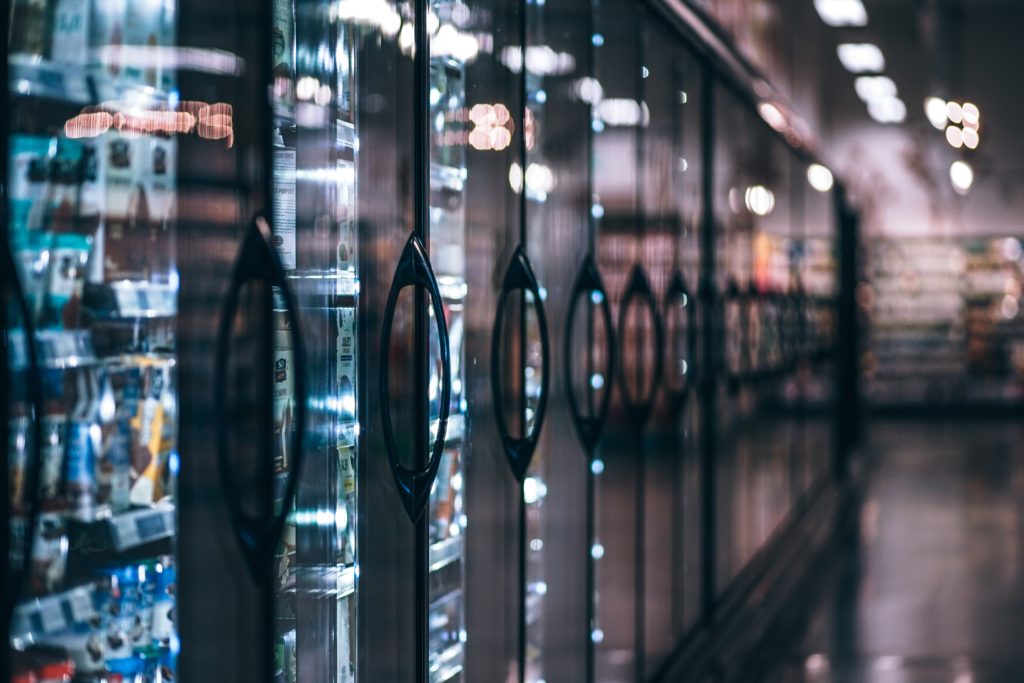When it comes to store fitting or refitting, the customer experience should always be the top priority. While companies celebrate drawing customers into their stores, the real measure of success lies in whether those customers stay long enough to make a purchase. Creating the right ambience, planning an effective layout, and ensuring clear price ticketing can all significantly increase conversion rates. In this guide, we explore five essential components for successful store fitting.
1. Store and display lighting
Lighting is more than just functional; it is a powerful tool to set the mood, highlight products, and create a welcoming environment.
Firstly, lighting contributes to the overall atmosphere of your store and reinforces your brand identity. A jewellery store, for example, often uses soft, focused lighting to create an elegant and sophisticated ambiance. Secondly, lighting is key to product presentation. Strategic placement of bright lights around or above specific displays can guide customers through the store, drawing their attention to featured products. This tactic not only makes items more noticeable but can also enhance their appearance, increasing their appeal.
Finally, the comfort of both customers and employees should not be overlooked. Avoid overly bright fluorescent or incandescent lights, which are known triggers for headaches and discomfort in light-sensitive individuals. Instead, opt for lighting that is visually pleasing and contributes to a positive experience for everyone in the store.
2. In-Store price ticketing
Price ticketing is often underestimated, yet it plays a critical role in influencing customer decisions. Transparent pricing helps to build trust and can significantly boost sales.
Research shows that roughly 80% of shopping decisions are made in-store, making clear and consistent ticketing indispensable. Ticketing does more than display prices; it can showcase discounts, bundle deals, and product information, all of which encourage impulse purchases and add-ons.
The way ticketing is presented also matters. Whether you use hanging banners, shelf labelling, plaques, or stands, the style should complement your store’s aesthetic and make it easy for customers to quickly find what they need. A well-thought-out ticketing strategy does the heavy lifting of communicating value in an increasingly self-service retail environment.
3. Store layout
A thoughtfully designed layout is crucial for creating an intuitive shopping experience that encourages exploration and maximizes sales.
Key elements of an effective layout include the placement of counters, prominent displays, and front-of-store windows. Positioning the counter near the entrance or exit ensures that customers encounter a friendly face as they enter and leave. This setup can also serve as a deterrent for theft, especially when there is good visibility across the store.
Large displays and well-lit product arrangements can entice customers to explore further. If customers can see a desirable product from another part of the store, they are more likely to venture over and potentially make additional purchases. The layout should strike a balance between guiding customers naturally through the store and allowing them to browse freely without feeling overwhelmed.
4. Inventory storage
Efficient inventory management is essential for maintaining seamless operations and ensuring products are readily available when customers need them.
For stores with extensive stock, large storerooms should be organized to prevent product damage and allow for efficient allocation. Clear labelling and structured stacking systems can save time and minimize errors. On the sales floor, secure cabinetry under displays can store additional stock while keeping it easily accessible for staff. This approach works particularly well for high-value items like electronics or jewellery.
The goal is to align your storage solution with your sales process, ensuring efficiency without sacrificing customer satisfaction.
5. Shelving height
Shelving height is an often-overlooked aspect of store fitting, but it directly affects how customers interact with your products.
Shelves that are too high or out of reach can discourage customers from browsing and purchasing. Where floor space allows, keep shelves at a lower height to make products more accessible. This setup encourages impulse purchases and allows customers to grab items without needing assistance.
To save space, consider single-item displays for lower-turnover products while storing excess inventory elsewhere. This approach condenses the display area without compromising on the variety of products available.
Conclusion
Successful store fitting is about more than just aesthetics. It’s about creating an environment that supports both customer satisfaction and operational efficiency. By focusing on key elements such as lighting, price ticketing, layout, inventory storage, and shelving, you can transform your store into a space that encourages browsing, builds trust, and ultimately drives sales.
Take the time to refine these components, and you’ll create a shopping experience that leaves a lasting impression on your customers.
What’s next
We hope you found these ideas useful. Like to see these strategies in action? Book a discovery call for a quick 15-minute demo with real-world examples you can share with your team.


